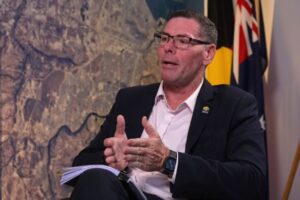
SACRAMENTO, Calif. — In a bold move to address California’s housing crisis, Governor Gavin Newsom has signed into law a sweeping overhaul of the state’s landmark environmental protection rules. The legislation, which Newsom signed on Monday night, aims to cut through the litigation and delays that have historically hampered housing development in the state. The Democratic governor, often mentioned as a potential 2028 presidential candidate, described the two-bill package as a historic reshaping of environmental regulations.
“We have too much demand chasing too little supply,” Newsom stated during a news conference. “So many of the challenges that ail us can be connected back to this issue.” The governor emphasized that the new laws represent the most significant housing reform in recent California history, targeting the critical housing shortage and long-running homeless crisis.
Background and Context
California, once known for its rapid growth, is now facing a potential loss of U.S. House seats in the 2030 census as its population migrates to states like Texas and Florida, where the cost of living is more affordable. With about 18 months remaining in his term, the term-limited Newsom is keen to cement his legacy by addressing the state’s soaring rents and home prices, which have become unaffordable for many middle-class families.
Upon entering office, Newsom had ambitious plans to end the housing shortage by building millions of new homes. However, as his term progresses, this goal appears increasingly challenging to achieve by January 2027. The newly signed legislation is seen as a pivotal step in this direction, although its immediate impact remains uncertain.
Expert Opinions and Challenges
Planning expert Bill Fulton, a former mayor of Ventura and director of planning and economic development in San Diego, offered a cautious outlook. “I think the increase will be incremental rather than a boom,” Fulton noted in an email, highlighting the various factors that influence housing development, including financing, construction costs, and labor availability.
Meanwhile, the political landscape in California is shifting as the race to succeed Newsom intensifies. Republicans have criticized Newsom and the dominant Democratic Legislature for failing to control costs across the board, from utilities to housing. The governor argues that the new laws are crucial for restoring trust in government and upholding the reputation of California.
Controversy and Opposition
The overhaul of the California Environmental Quality Act (CEQA), a 1970s law mandating strict environmental reviews for new developments, was a contentious issue. Newsom had threatened to veto the state budget unless lawmakers reformed CEQA, which he and housing advocates claim has become a bureaucratic barrier to housing construction. Despite opposition from environmental groups, lawmakers passed the measure.
Jakob Evans, a senior policy strategist for Sierra Club California, criticized the legislation, stating, “These half-baked bills written behind closed doors will have destructive consequences for environmental justice communities and endangered species across California.”
“This was too urgent, too important, to allow the process to unfold as it has for the last generation,” Newsom declared after signing the bill.
Looking Ahead
Earlier this year, Newsom waived some CEQA provisions for wildfire victims in Southern California, signaling a willingness to reexamine the law. The recent state budget, which passed last week, reflects a shift in priorities, scaling back on progressive initiatives like healthcare expansion for low-income immigrants to address a $12 billion deficit.
The implications of Newsom’s legislative push are significant, as they could reshape housing development in California for years to come. However, the true test will be whether these reforms can effectively address the housing shortage and make living in California more affordable.
As California navigates these changes, the state’s approach to balancing environmental protection with urgent housing needs will likely serve as a model—or a cautionary tale—for other states grappling with similar challenges.







